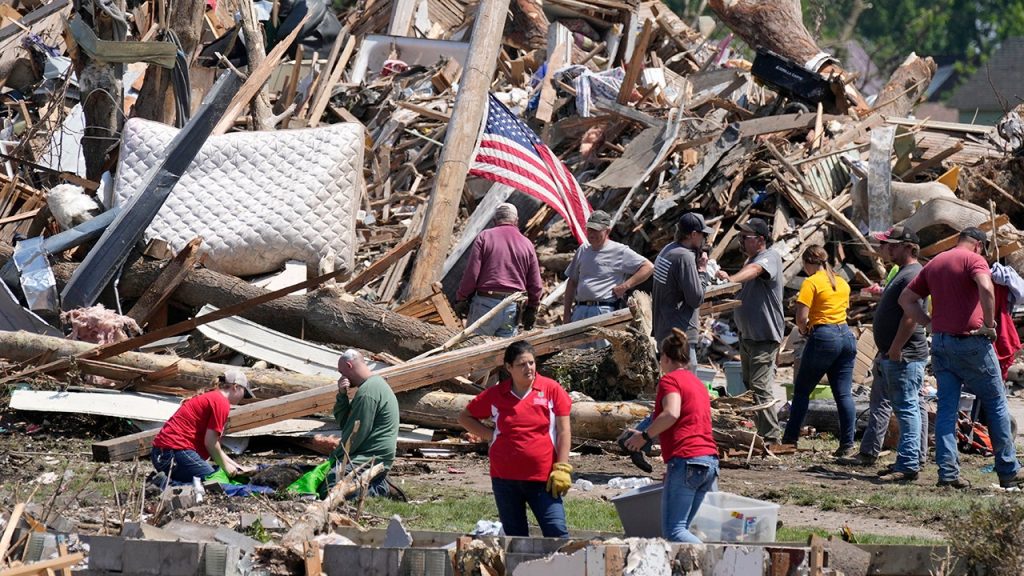A devastating EF-4 tornado tore through Greenfield, Iowa, destroying more than 202 homes and claiming the lives of four residents. The destruction left behind a mile-long swath of demolished structures, vehicles, and trees, with the town’s 25-bed hospital also sustaining damage. The tornado, with winds reaching 175-185 mph, caught many residents off guard, including 80-year-old Edith Schaecher, who was trapped in her collapsed home along with her daughter. The tornado moved through the area in a matter of seconds, leaving destruction in its wake and prompting a quick response from emergency responders and the Federal Emergency Management Agency.
Residents like Bill Yount and Joan Mitchell faced the daunting task of cleaning up and rebuilding following the tornado. Yount’s house miraculously survived while neighboring homes were completely destroyed, leaving him puzzled as to why his home was spared. Mitchell, who initially ignored the tornado warnings, found herself knocked to the floor by the powerful winds, but she and her son managed to survive with only minor injuries. The tornado drew parallels to similar instances around the country, such as the deadly tornado in Logan County, Ohio, earlier in the year, highlighting the increased severity of storms in recent years attributed to climate change.
As the community of Greenfield grappled with the aftermath of the disaster, more severe weather loomed on the horizon, with forecasts predicting additional storms and possible tornadoes in the region. Emergency preparations were underway in storm-damaged parts of Texas, Oklahoma, and Kansas, as residents braced for the next round of severe weather. The swift response from local authorities, along with assistance from FEMA, aimed to provide resources and support to those affected by the tornado, including funding for temporary housing. Efforts to secure a presidential disaster declaration for heavily impacted counties were underway to expedite the recovery process.
The Greenfield tornado marked the third EF-4 tornado of 2024, underscoring the unusually active tornado season in the U.S. Climatologists warned of the heightened risk of severe storms and tornadoes due to the effects of climate change, with the number of tornadoes in April reaching near-record levels. The increasing frequency of tornadoes across the country, including in tornado-prone states like Iowa, raised concerns about future storm preparedness and infrastructure resilience. As communities worked to rebuild and recover from the devastation of the tornado, the focus turned to long-term planning and mitigation strategies to adapt to the changing climate patterns.
The governor of Iowa, Kim Reynolds, sought additional support from FEMA and other federal agencies to address the extensive damage caused by the tornado in Greenfield and surrounding areas. Efforts to secure a presidential disaster declaration aimed to accelerate the allocation of resources and assistance to affected families and businesses, including funding for reconstruction and recovery efforts. Despite the challenges posed by the severe weather events, communities in Iowa remained resilient and determined to rebuild in the face of adversity, demonstrating the strength and solidarity of the residents in times of crisis. The tornado served as a stark reminder of the destructive power of nature and the importance of disaster preparedness and response measures to minimize the impact of future storms on vulnerable communities.













